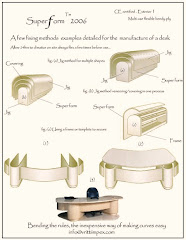
Globe Star at Cape Towns Royal Cape Yacht Club.

Globe Star

The Route

Globe Stars sail plan
 Marvin Creamer.
Marvin Creamer.It was after an early morning shower at the RCYC mens facility,I was having a shave at the row of sinks and standing next to me, was a guy called Marvin Creamer doing the same,just an average looking guy,we chatted and he spoke real easy,you would never think he was on his way soon by small yacht for the southern ocean and all it entailed,this was by way of the stars and ocean currents,as while Marvin had tables and a sextant aboard,they were sealed and not to be used on his around the world voyage.This was long before what was termed Satnav became the norm,Having recently invested in GPS I can only think back to that shave and the man standing next to me doing the same.
The Globe Star voyage
By David Cromie
house fly brought the news: land was near! On May 13, 1984, after 510 days at sea, Marvin Creamer ’43 neared the end of a voyage which had begun as a fantasy in his teenage mind while reading avidly about oceangoing sailboats. For half a century, Creamer dreamed of sailing ’round the world in a small boat. On the second of his eight Atlantic crossings, he began to consider the possibility of a voyage around the globe without the use of navigational instruments. Now, the appearance of the house fly was a good indication that he was about to become the first person in recorded history to complete such a feat. His 36-foot vessel, The Globe Star, was almost home.
Four days after the fly’s visit, following a night of “wrestling with heavy sails,” the exhausted skipper had just crawled into his bunk when he was awakened by repeated shouts. Overhead, a U.S. Coast Guard chopper circled the Globe Star. Off the starboard bow, Creamer spotted a red marker, the “F” marker just 15 miles south of Cape May. At 1 p.m. on May 17, the Globe Star entered Cape May harbor having logged 30,000 miles and 17 months at sea. It had been a “jolly romp” on the ocean, Creamer writes in his record of the journey.
Using only environmental clues, Creamer and his crew sailed around the globe in a record-breaking feat of grand proportions. They relied on stars, waves and water color, bird life, cloud formations, the sun and planets, the horizon and identifiable landmarks. With their sextant, clock, compass and radio sealed in a locker below deck, the crew of the Globe Star proved what Creamer had always believed—that it is possible to navigate the globe in a small boat without instruments. The soft-spoken 68-year-old retired geography professor became an American hero much admired by those he met during his adventure. Creamer and his crew docked at Capetown, South Africa; Hobart and Sydney, Australia; Whangora, New Zealand; and Port Stanley in the Falkland Islands. Christmas 1983 was spent in the Falklands where they had unknowingly made port at a top secret British military installation. “We were the talk of the Royal Air Force,” Creamer writes. “They treated us like kings, but they thought we were crazy.”
“What we demonstrated,” he concludes, “is that information taken from the sea and sky can be used for fairly safe navigation. How far pre-Columbians sailed on the world’s ocean we do not know; however, it is my hope that the Globe Star voyage will provide researchers with a basis for assuming that long-distance navigation without instruments is not only possible, but could have been done with a fair degree of confidence and accuracy.”
Creamer has always been a doer as well as a dreamer. As a Glassboro State undergraduate, he founded and published The Half-Whit, parody and competition for the official student paper, The Whit. From 1948 to 1977 he served his alma mater as a professor, and also held posts as director of public relations, president of the Faculty Association and chair of the Social Studies Department. Named Outstanding Professor by The Whit in 1964 and Distinguished Alumnus by fellow alums in 1980, Creamer won additional awards after the voyage: Cruising World appointed him to the Sailing Hall of Fame, and in 1986 the Cruising Club of America awarded him sailing’s highest honor, the Blue Water Medal. Today, Creamer and his wife, Blanche Layton Creamer ’42, reside in Pine Knoll Shores, N.C., where they plan to stay on dry land.




No comments:
Post a Comment